Field Mushroom / Spring / Summer / Autumn / Edible
Indulge in the timeless allure of Field Mushroom (Agaricus campestris) as we embark on a culinary journey celebrating their irresistible flavors.
Join us as we explore the abundant pleasures these edible treasures bring to the table. With their classic, creamy-white caps and tender texture, Field Mushrooms have long been cherished in the culinary world.
Learn to identify their distinctive features, discover their preferred habitats, and delve into the culinary versatility they possess. From their mild, earthy taste to their delightful aroma, these mushrooms hold the power to enhance a wide range of dishes.
Whether you are an experienced forager or an enthusiastic home cook, let the Field Mushrooms be your culinary companions, elevating your recipes to delectable heights. Embrace the simplicity and abundance of nature’s bounty as we celebrate the timeless pleasures that lie within the Field Mushrooms. Get ready to embark on a flavor-filled journey as we explore the captivating culinary possibilities offered by these delightful mushrooms.
Scientific Name
Agaricus campestris
Common Names
Field Mushroom
Family
Agaricaceae
Habitat
In fields, meadows and parks. They are saprotrophic, feeding on the dead roots systems of grasses and moss. They can appear in fairy rings, individually or in small groups.
Description
The most commonly eaten wild mushroom in the UK. Easy to identify mushroom, they are very common some years and can sometimes be found in huge quantities.
Identifying Features:
Cap:
They can be quite changeable, most often they are off white and smooth but sometimes they are darker and develop rough scales. Spherical wen young they flatten out with age. They can be up to 10 cm across. The flesh can sometimes stain pinkish.
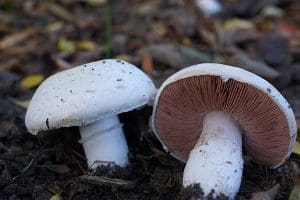
Stem:
The stems have a delicate skirt which isn’t always present in older specimens. The stem is smooth above the skirt and scaley below. Around 5-10 cm long.
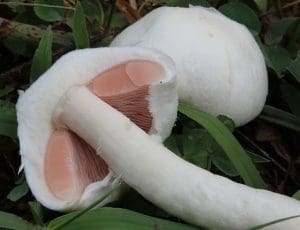
Gills:
The gills are crowded and free, pink initially they darken to a rich brown colour when mature.

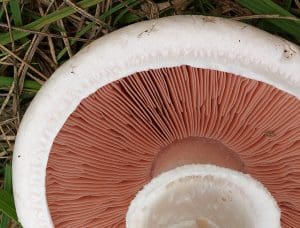
Smell:
Mushroomy.
Spores:
Chocolate brown.
Uses
In food
A gourmet edible, they can be used in any recipe called for mushrooms. They work particularly well in risottos and stews.
Harvesting
The younger caps are best as the older ones are often maggoty. They are less common now than they were in the past due to the increased use of chemicals, but in fields where cattle, horses or sheep graze they can be found in huge numbers, some years.
Known hazards
None known. But be aware of where they are collected from, fields are quite often sprayed with chemicals.
Potential lookalikes
The young specimens have been mistaken for Amanita species in the past, so inexperienced foragers should only collect more mature examples who’s gills have darkened, as the gills of Amanitas stay white.
The Yellow Stainer (Agaricus xanthodermus) looks similar but stains yellow when damaged and smells of iodine.
Extra Notes
The Latin name campestris means ‘of the fields’ in reference to where they grow.
Research is ongoing into their medicinal properties, dressings made from the mycelium are being used to treat bed sores and ulcers.



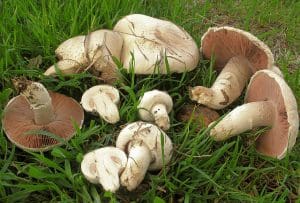
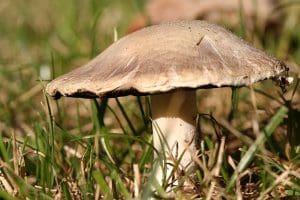



Leave a Reply
You must be logged in to post a comment.